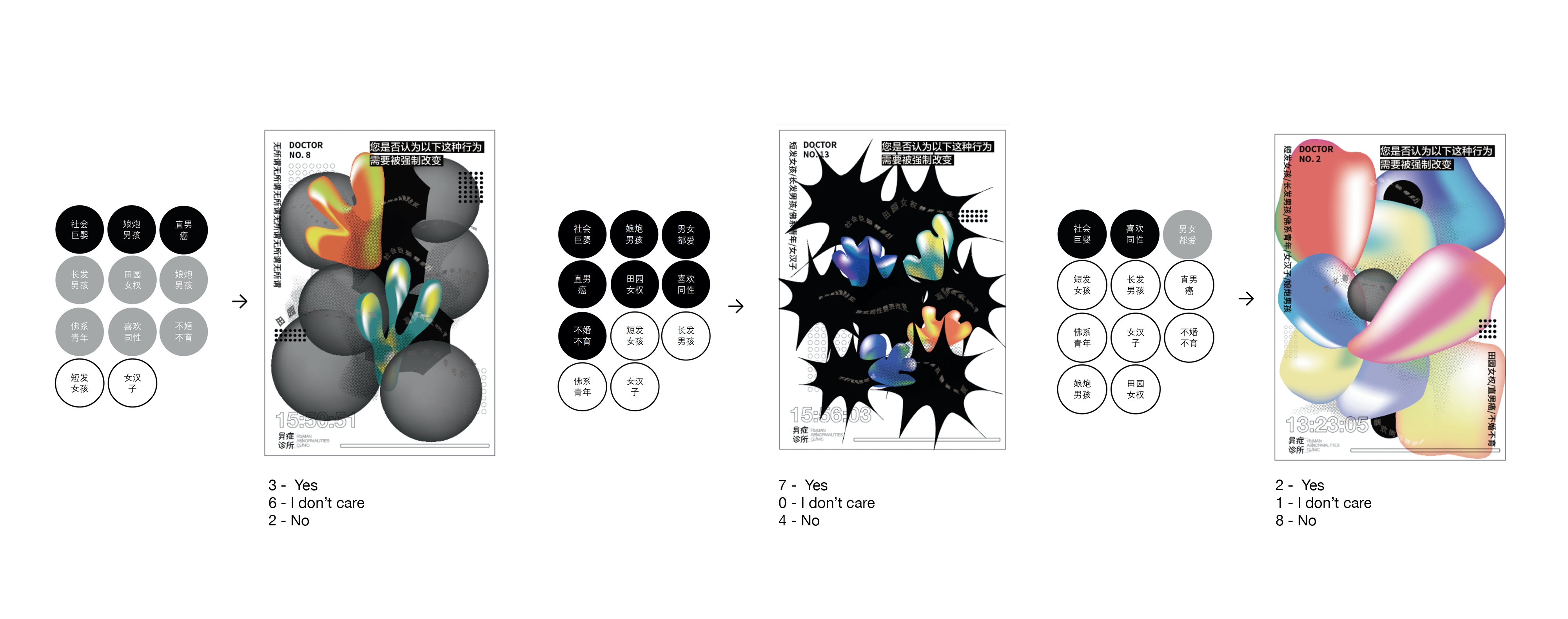Human Abnormalities Clinic
Is is possible to create a set of rules that
visualize people’s opinions?
Speculative Design
BA thesis (Shenzhen Univerisity)
Instructor
Qinyang He
From the perspective of social diversity and inclusivity, I want to extract and screen “labels” of minority groups that exist in the Chinese Internet platforms, and collect the masses’ opinions on these labels. Through information visualization, the public’s views and prejudices on these labels are generated, showing the acceptance level of differences and diversity of the general public in Chinese society.

︎︎︎Preface
Even in modern society, people are still greatly influenced by tranditional and conservative values without acknowledging it. We have been living in it for so long that we sometimes ignore the fact that there are certain things in these tradtions are dated, and should be abandoned when we are trying to build a better world.
We try to break away from the single value judgment, but we also have established more labels in our daily life. Somehow our society only allows certain thoughts and feelings to remain in its people’s consciousness, and excludes the ones that do not meet its social requirements.
We have not yet been able to respect and embrace the diversity as much as we want to.
︎︎︎What question to ask
I created this word “Human Abnormalities Clinic”. By selecting a series of “labels” that are popular on the chinese internet, I want to invite random people to become the “doctor” in this scenario. They become the judges to these actions and behaviours by answersing the question whether these behaviors should be changed.
But what these “doctors” don’t know is, they are actually the ones that are being “diagnosed”. While they are making judgement of other people, they are also showing their own level of openness and opinions of the world.
This project intends to create a set of graphic rules to visualize these opinions.


︎︎︎Visual concept

In the early stage of the idea developing process, the format of distinguishing various “abnormalities” by color came into being. By thinking about the possibility of combining various colors and forms, I introduced the idea of kaleidoscope into the project.
The more “abnormalities” one could accept, the more diversed and interesting the world one could see.
︎︎︎How to ask the question
Gathering
opinions
opinions
I used an online H5 platform and created a questionnaire to collect individual people’s views on “abnormalities”. The overall visual design extracts the visual characteristics of “unlicensed hospital”, that is “bulky” and “full”.
When entering the questionnaire, doctors would get the notification of “Cannot modify after an answer is chosen, please choose carefully.” The tab automatically jumps to the next one after an answer is selected.

During the diagnose process, in addition to the name of “abnormalities” in each tab, there is an objective description of the behavior.
Choosing different options will trigger different visual feedback:
Yes - black background.
I don’t care - gray
No - white.
In order to ensure the objectivity of the selection process, the primary colors are only black, white and gray, to avoid any possible interference in this process.
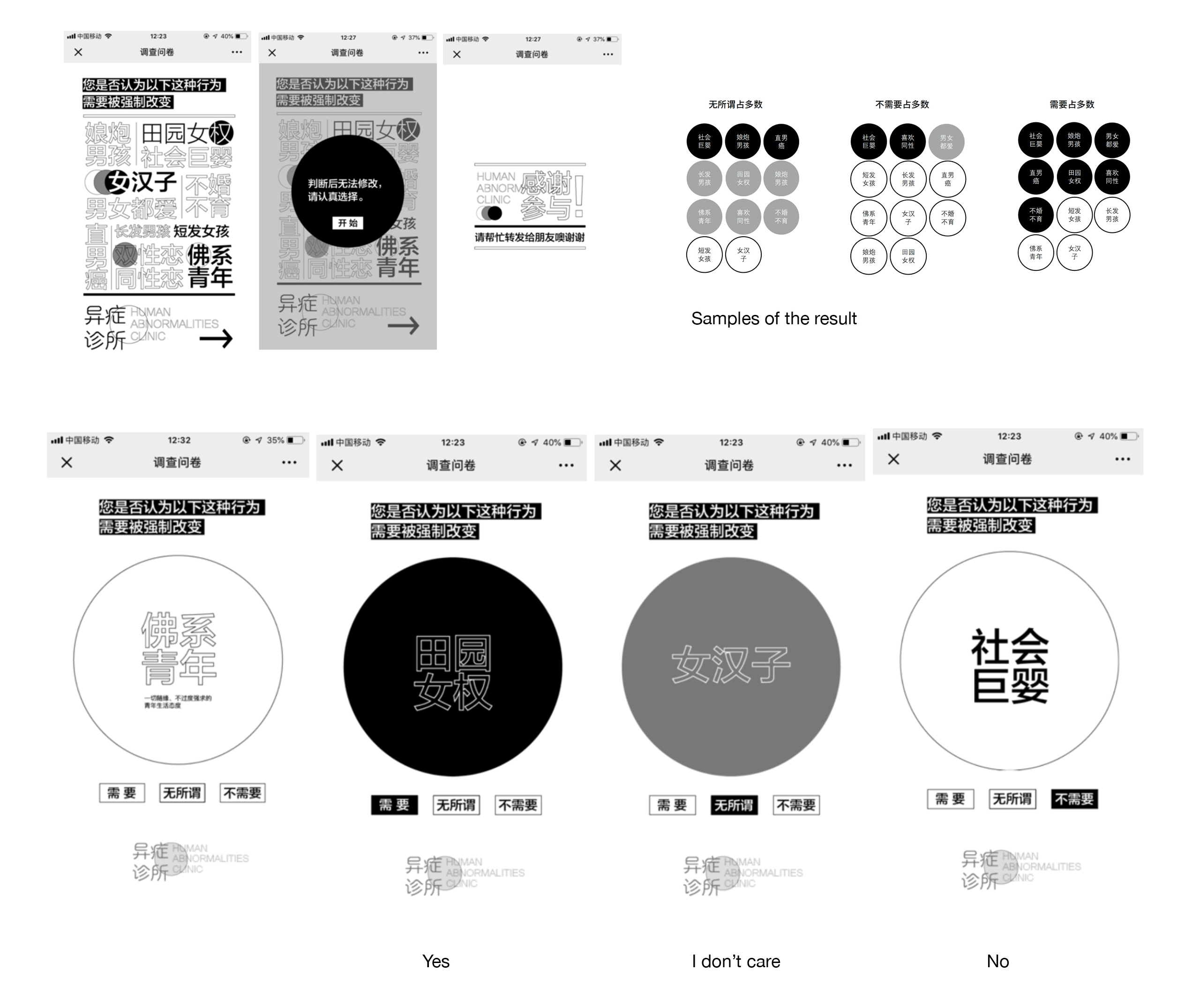
In order to show the contrast of different tendencies, I used shapes and colors to differentiate the answers.
This includes shifting between regular geometric shapes and organic shapes, as well as a color-coded system.
︎︎︎Shape
Yes
The doctor does not agree with the behavior, and hopes not to see this “abnormalities”. The visual image is solid black;
I don’t care
This behavior does not matter to the doctor, it is an obscure opinion.
No
The doctor thinks that the existence of this phenomenon is reasonable, and people with this “abnormalities” do not need to change their behavior.

︎︎︎Color
For the colors, I introduced the personality system into the color setting, giving the four dimensions of the system different colors:
Instable – Red
Stable – Green
Introvert – Blue
Outrovert – Yellos
Based on these four colors, a gradient color card is established. Each color corresponds to the adjective respectively.
Instable – Red
Stable – Green
Introvert – Blue
Outrovert – Yellos
Based on these four colors, a gradient color card is established. Each color corresponds to the adjective respectively.

︎︎︎Tendency

After the establishment of the graphics and color rules, a further visual image system is formed according to the tendency of each interviewee/doctor’s diagnosis.
Depending on the number of “yes” and “no” chosen, the shape of the opinion will also change.
The more “yes” are chosen, the sharper the dark mask will become. The higher the frequency of “no”, meaning the doctor’s acceptance level is also getting higher, the image would become less and less aggressive and rounded.
︎︎︎Outcome

For the compostion of the report, I added in certain typographic elements that guide the audience to understand each doctor’s diagosis.
When the “doctors” show different tendency in their diagnosis,the reports of themselves, their openness and acceptance level of the world, are also different.
When the “doctors” show different tendency in their diagnosis,the reports of themselves, their openness and acceptance level of the world, are also different.
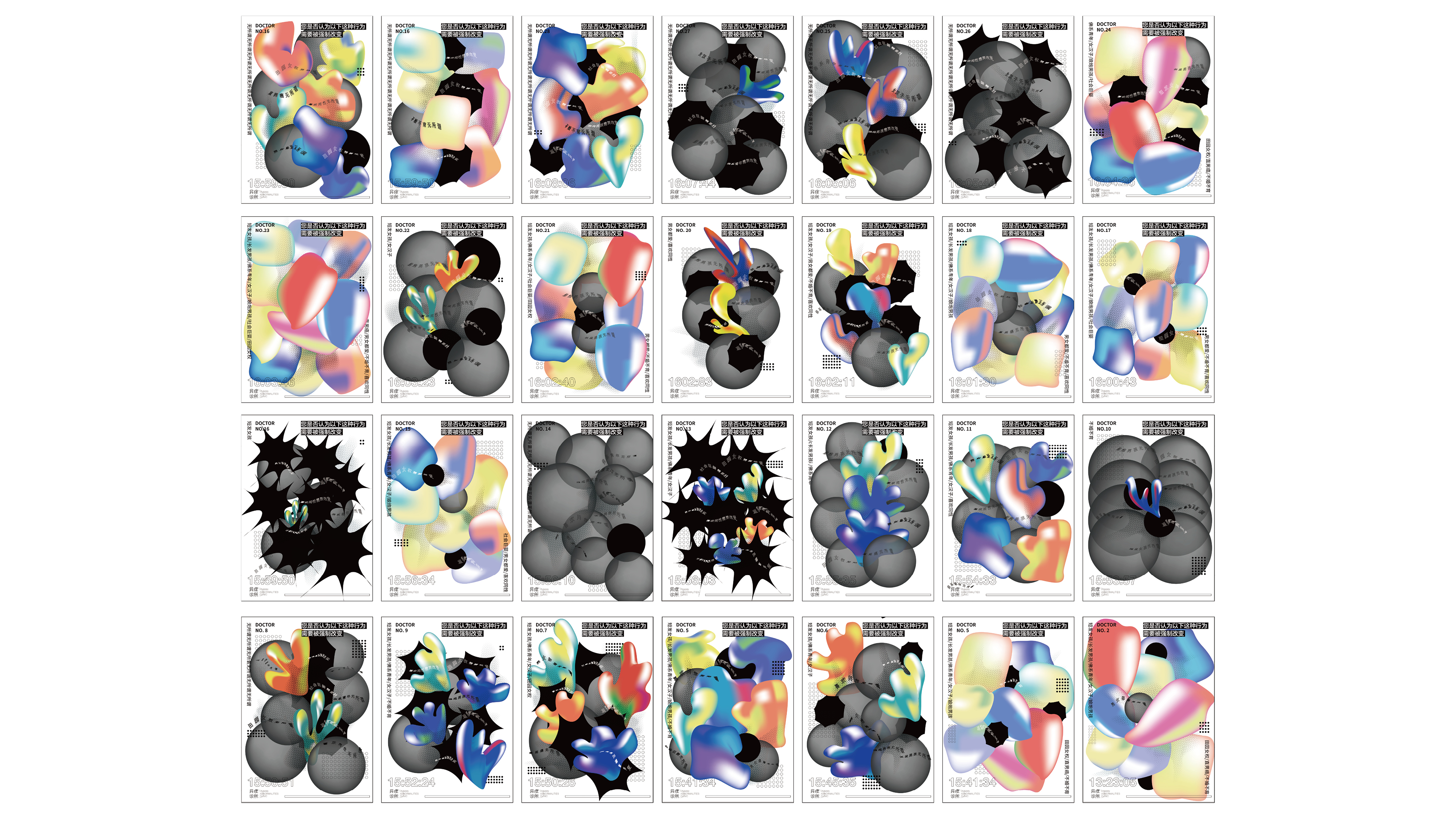
︎︎︎Applications
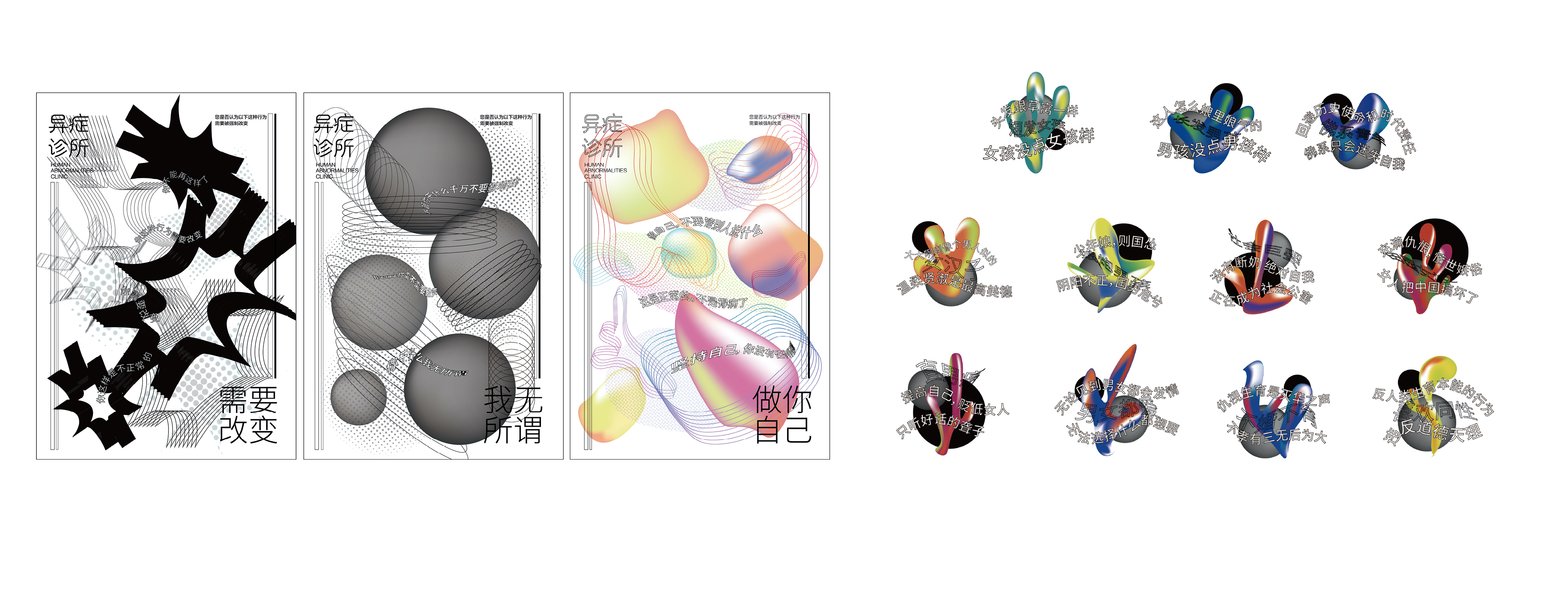
Three posters are created for the
three different tendencies.
This set of graphics shows how these abnormalities are trapped in their critique and misunderstanding.
︎︎︎Physical test sheet

A set of sticker and an additional diagnosis sheet was provided so that audience can create their diagnosis on set at our grad show.
I also designed three different receipts with the qrcode directed to the H5 questionaire webpage and they were printed by actual receipt printer.
︎︎︎Applications: Badges, Wrist bands, Business card
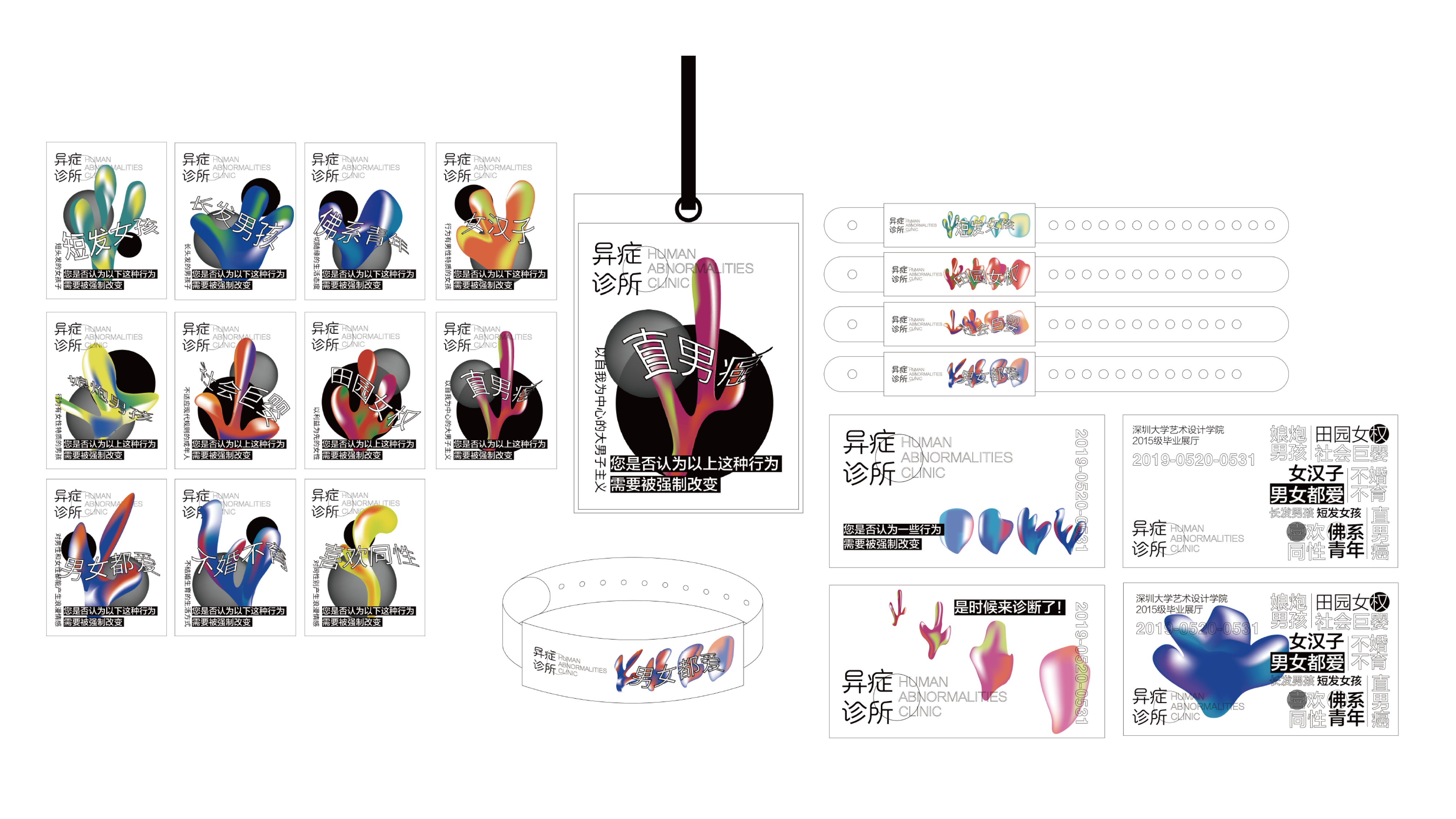
︎︎︎Drag the stickers from the right to the sheet below.
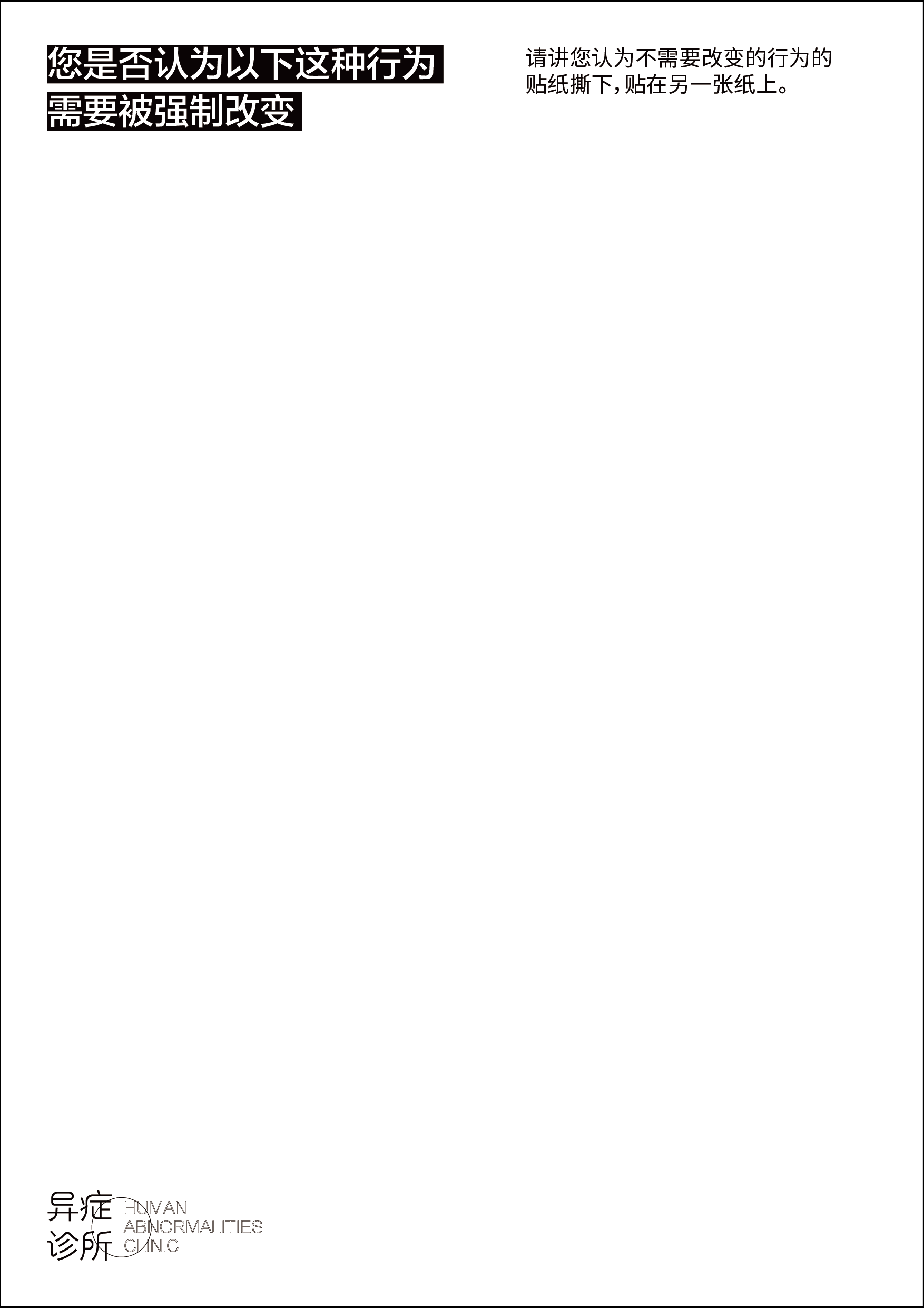
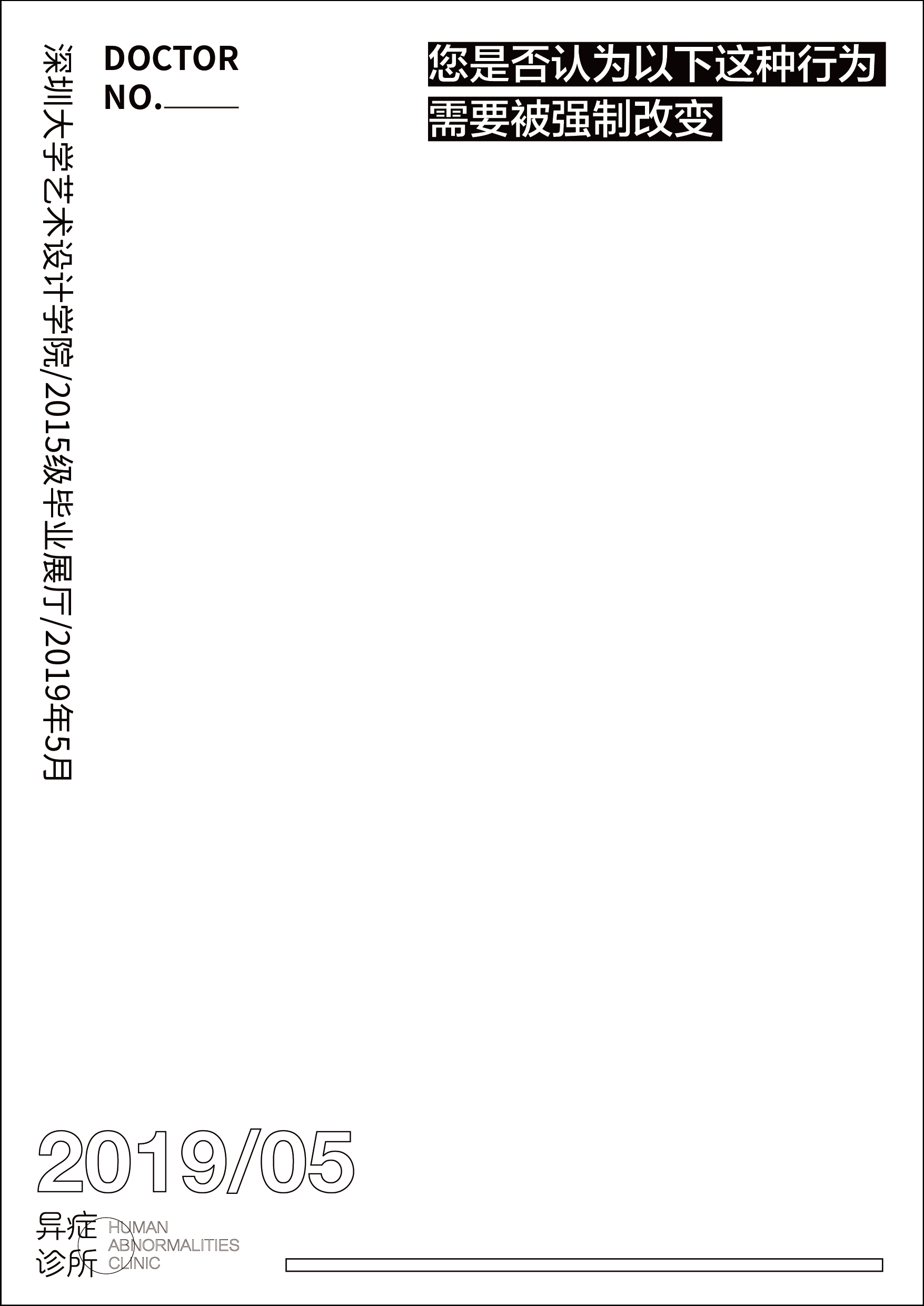
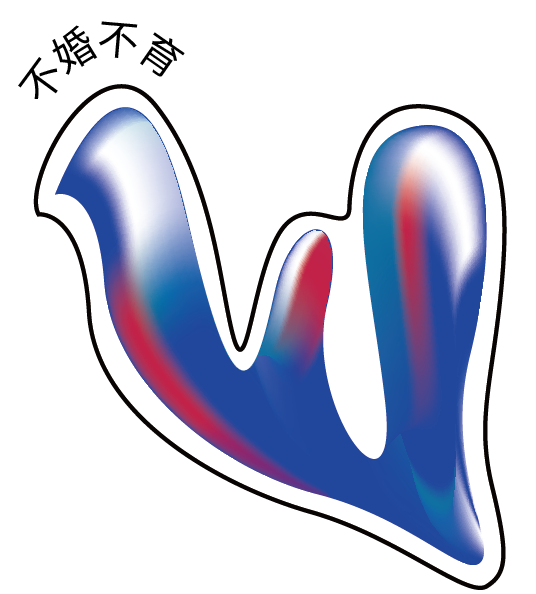

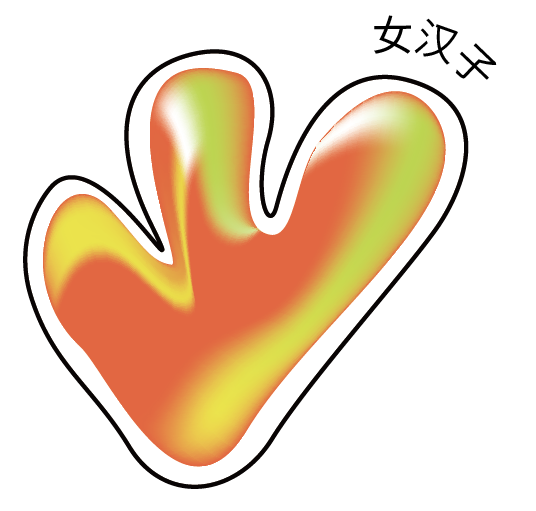
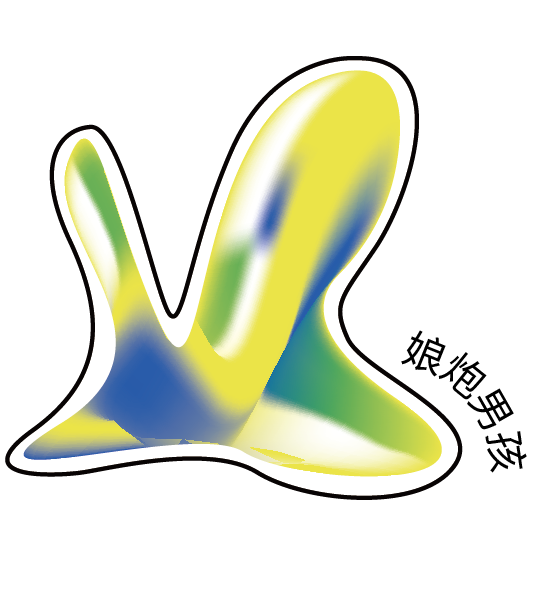


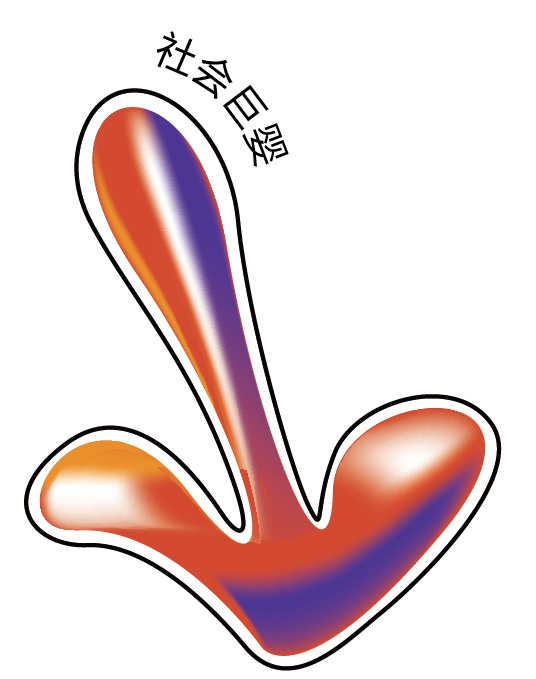


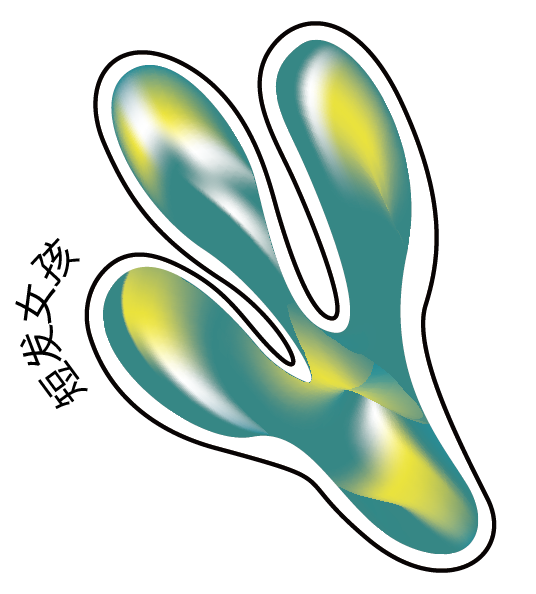
︎︎︎Exhibition
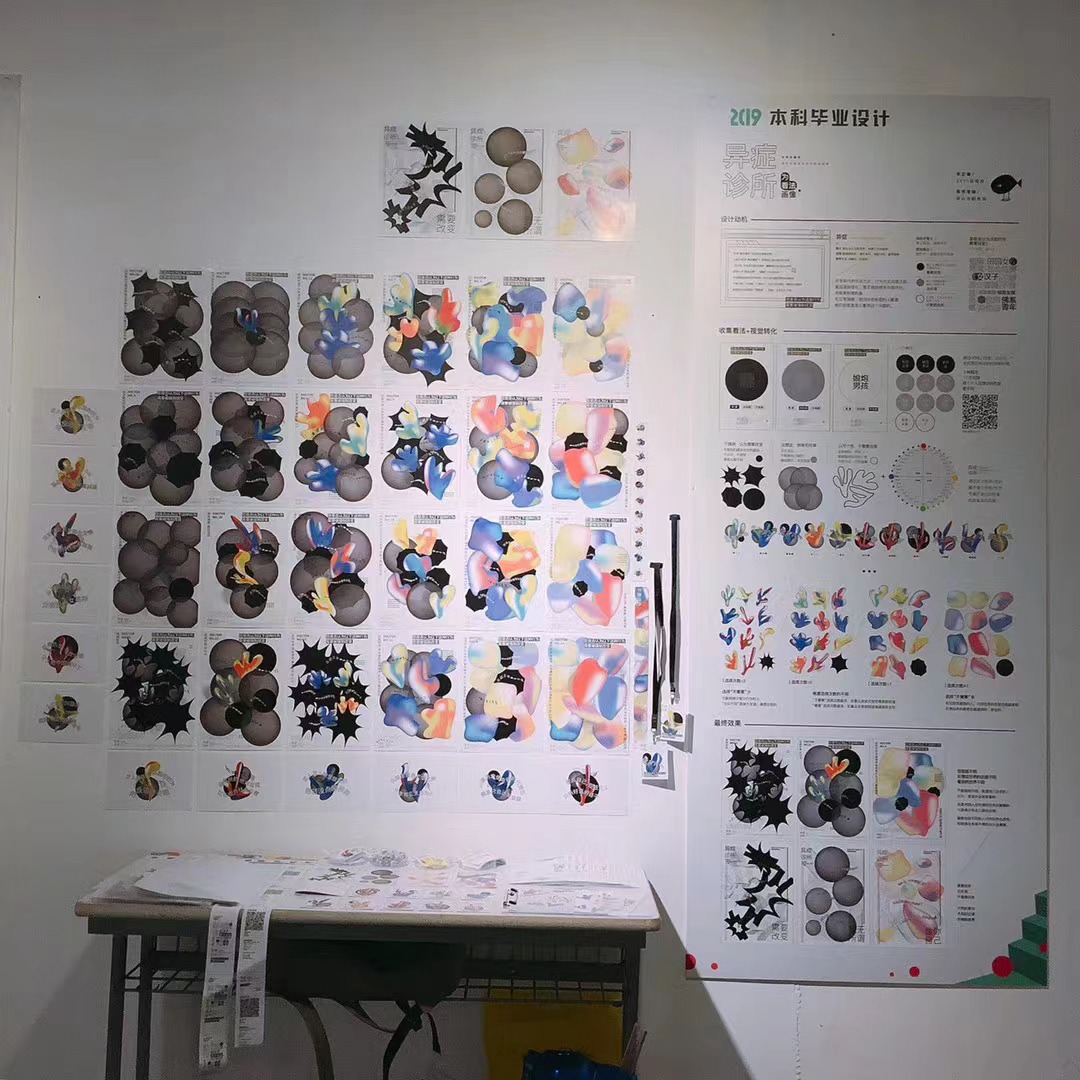
︎︎︎ NOOOISE Virtual Livehouse
︎︎︎ 21C Museum Hotel
︎︎︎ VICTORIA
︎︎︎ 19+1 Magazine
︎︎︎ Aeroflot Russian Airlines
︎︎︎ Human Abnormaliteis Clinic
